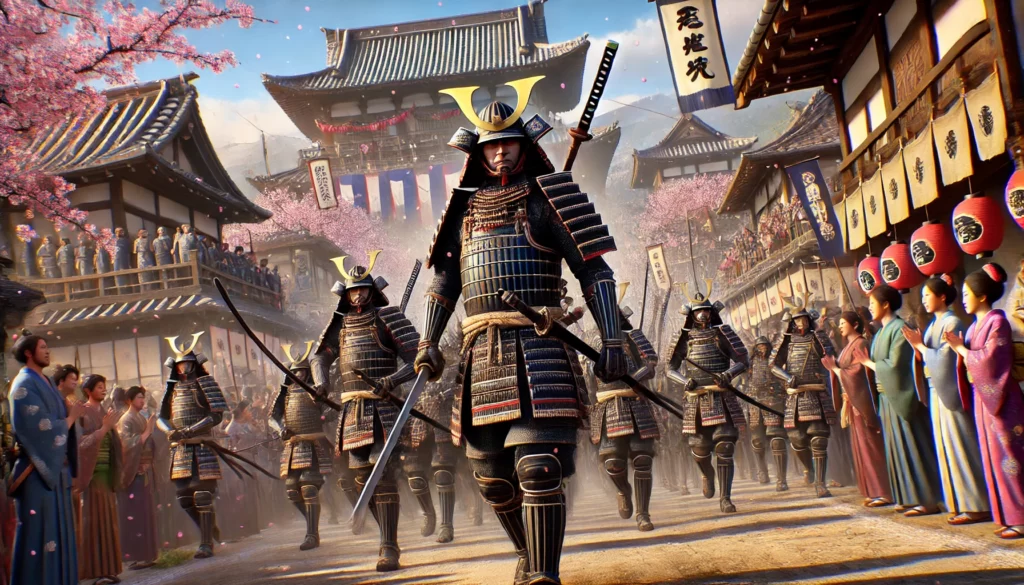The Samurai armor, or “yoroi”, is a remarkable blend of craftsmanship, functionality, and symbolic artistry.
Rooted in the traditions of feudal Japan, this armor not only protected its wearer in battle but also served as a canvas for personal, familial, and cultural expression.
From its construction to its intricate designs, Samurai armor tells a story of dedication to the warrior’s code, or “bushido”, and offers insights into the values of the Samurai class.
This comprehensive exploration delves into the history, components, materials, and enduring legacy of Samurai armor, shedding light on its profound impact on Japanese culture.
Samurai Armor
Origins and Historical Evolution
Samurai armor emerged during Japan’s Heian period (794–1185), a time when mounted archery was a dominant military tactic.
Early designs, such as the ō-yoroi (large armor), were heavy and primarily constructed to protect mounted warriors.
As warfare evolved, so did the armor, leading to innovations in flexibility and weight reduction.
Key historical milestones in Samurai armor development include:
- Heian Period: The birth of the ō-yoroi, characterized by its box-like structure and focus on protection for mounted archers.
- Kamakura Period (1185–1333): Introduction of the dō-maru, a more compact and flexible design favored by foot soldiers.
- Sengoku Period (1467–1615): Heightened warfare led to mass production and innovations such as the lightweight tatami armor, made from iron plates and chainmail.
- Edo Period (1603–1868): A time of relative peace under Tokugawa rule. Armor became more ceremonial, emphasizing artistry and status over battlefield functionality.
Components of Samurai Armor
Each piece of Samurai armor was meticulously crafted to provide maximum protection while allowing agility in combat. Below is a breakdown of its key components:
- Kabuto (Helmet)
- Constructed from riveted iron plates.
- Often featured elaborate crests (maedate) representing clan symbols or deities.
- Included a neck guard (shikoro) for additional protection.
- Symbolism: The kabuto reflected the Samurai’s rank and spiritual beliefs, with motifs often invoking divine protection.
- Menpō (Face Mask)
- Covered the lower face to protect from strikes.
- Designed with fierce expressions to intimidate enemies.
- Sometimes featured mustaches or other embellishments to personalize the warrior’s look.
- Dō (Chest Armor)
- The centerpiece of the armor, protecting the torso.
- Constructed from horizontal iron or leather plates, bound with silk laces.
- Decorated with clan crests and artistic motifs.
- Flexibility was a key feature, allowing ease of movement.
- Sode (Shoulder Guards)
- Large rectangular plates attached to the dō, providing lateral protection.
- Often adorned with patterns or lacquered designs.
- Kote (Armored Sleeves)
- Covered the arms and hands, combining iron plates with chainmail for flexibility.
- Offered a balance of mobility and defense.
- Haidate (Thigh Guards) and Suneate (Shin Guards)
- Provided lower body protection.
- Constructed from small iron plates sewn into fabric for lightness and durability.
Materials and Craftsmanship
Samurai armor was a masterpiece of engineering and artistry, blending durable materials with intricate designs.
- Core Materials
- Iron: The primary material for defensive plates.
- Leather: Used for flexibility and as a base for iron fittings.
- Silk: Provided decorative lacing and reinforced connections between plates.
- Lacquering Techniques
- Lacquer coatings protected the armor from rust and the elements.
- Vibrant colors like red, black, and gold added aesthetic appeal and symbolic meaning.
- Artisan Contributions
- Armor was crafted by specialized artisans, often working under the patronage of Samurai families.
- Each suit could take months to complete, reflecting a high level of dedication and skill.
Symbolism in Samurai Armor
Samurai armor was more than functional gear; it was a visual representation of the warrior’s identity, beliefs, and aspirations.
The symbolic elements embedded in the armor included:
- Colors
- Red: Courage and strength.
- Black: Dignity and formality.
- Gold: Wealth and divine favor.
- Motifs and Patterns
- Dragons: Power and protection.
- Waves: Resilience and adaptability.
- Cherry Blossoms: The fleeting nature of life, echoing the Samurai’s acceptance of mortality.
- Clan Crests (Mon)
- Displayed prominently on the dō or kabuto.
- Represented loyalty to one’s clan and heritage.
The Role of Samurai Armor in Battle

Samurai armor was designed to balance protection, mobility, and psychological impact.
On the battlefield, it served three primary purposes:
- Protection: Shielding vital areas without hindering movement.
- Intimidation: Elaborate designs and fierce masks instilled fear in adversaries.
- Identification: Distinctive features and clan crests helped allies recognize each other.
Legacy of Samurai Armor
Although Samurai armor ceased to be a practical necessity after the Meiji Restoration in 1868, its legacy endures.
Today, it is celebrated as a cultural and artistic treasure, featured in:
- Museums: Collections in Japan and abroad preserve historical examples.
- Modern Media: Samurai films and anime often draw inspiration from traditional armor designs.
- Martial Arts: Practitioners of kendo and other disciplines honor the Samurai tradition.
Replicas and exhibitions continue to inspire awe, connecting modern audiences with the valor and artistry of feudal Japan.
Conclusion
Samurai armor is a fusion of functionality, artistry, and deep cultural symbolism.
Each component reflects the ingenuity of its creators and the values of the warriors who wore it.
From its origins in the Heian period to its ceremonial role in the Edo era, Samurai armor remains an enduring symbol of Japan’s martial and artistic heritage.
Through its intricate designs and profound symbolism, Samurai armor speaks to the timeless ideals of courage, honor, and dedication, offering a window into the soul of the Samurai.
Whether admired for its aesthetic beauty or its historical significance, Samurai armor continues to captivate and inspire across generations.
You might like: Female Samurai Warriors